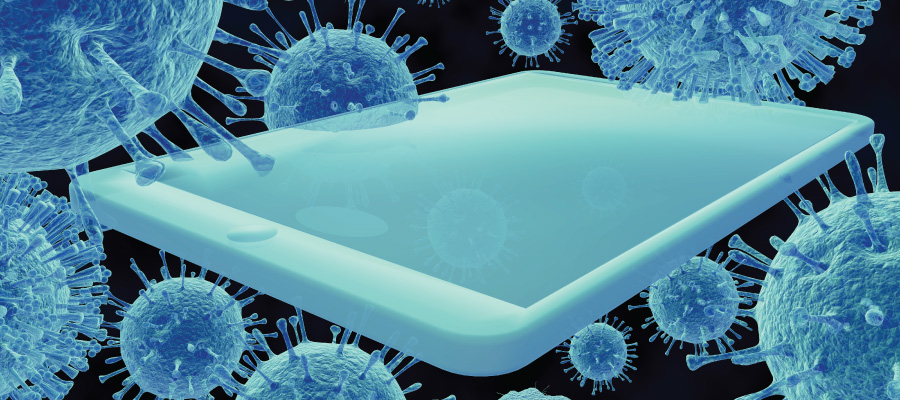When’s the last time you picked up your phone? Are you maybe holding it right now?
If you’re like the average American, you don’t go more than 12 minutes without checking your phone, grabbing it somewhere in the neighborhood of 80 times a day, according to research from global tech companies and digital marketers.
But we probably don’t need a study to know that we bring our smartphones practically everywhere we go—from the bathroom to our desks to the gym bench to the kitchen counter. Basically, it’s likely that your phone is teeming with bacteria. And so is your laptop keyboard. And your tablet. And your Fitbit. And probably also your earbuds…
You get the idea: your tech is probably pretty gross.
And since germs are easily spread from your phones, tablets and other devices to your hands and face, you may want to consider cleaning your devices more regularly in the interest of preventing illness—from the flu to respiratory viruses to coronavirus.
CDC: Clean all “high-touch” surfaces every day
In its Coronavirus Disease 2019 (COVID-19) Situation Summary, the Centers for Disease Control and Prevention recommends cleaning all “high-touch” surfaces every day—including phones, keyboards and tablets, as well as other regularly-touched surfaces like counters, tabletops, doorknobs, remotes, light switches, bathroom fixtures, toilets and bedside tables.
“Use a household cleaning spray or wipe, according to label instructions,” the CDC advises for these high-touch surfaces. For disinfection, the CDC website links to a list of products with EPA-approved emerging viral pathogens claims, maintained by the Center for Biocide Chemistries.
However, for your smartphone in particular, be aware that phone manufacturers caution against using household cleaners, vinegar or disinfectant wipes*, as they can strip the phone screen’s protective coating and leave it more vulnerable to scratches. Scrubbing a phone using a paper towel may also leave scratches.
That’s why Apple and Samsung both generally recommend using a soft, slightly damp, lint-free cloth to clean your smartphone, such as a lens cloth.
“Your iPhone has a fingerprint-resistant oleophobic—oil repellent—coating,” Apple explains in its cleaning recommendations, noting that on the iPhone 8 and newer models, the coating is on both the front and back of the phone. “This coating wears over time with normal use. Cleaning products and abrasive materials will further diminish the coating and might scratch your iPhone.”
* UPDATE: As of March 9, Apple now says on its support site that it’s OK to use disinfectants on Apple products:
“Using a 70 percent isopropyl alcohol wipe or Clorox Disinfecting Wipes, you may gently wipe the hard, nonporous surfaces of your Apple product, such as the display, keyboard, or other exterior surfaces. Don’t use bleach. Avoid getting moisture in any opening, and don’t submerge your Apple product in any cleaning agents. Don’t use on fabric or leather surfaces.”
While there are different schools of thought on the best ways to sanitize your devices, you should always refer to manufacturer guidelines.
Another option that’s growing in popularity and shows promise in research studies: Ultraviolet (UV) light sanitizers made specifically to clean smartphones, tablets, remote controls, game controllers and other tech accessories. If you go the UV route, experts advise choosing a device that uses UV-C light to kill germs. This guide from NBC News reviews some options, and these tips from iPhone Hacks also outline a few methods.
Clean your hands often
However you choose to keep your devices clean, one tried and true illness-prevention recommendation from the CDC is to wash your hands frequently. (Keeping your hands clean will help keep your phone cleaner!)
“Wash your hands often with soap and water for at least 20 seconds, especially after going to the bathroom; before eating; and after blowing your nose, coughing, or sneezing,” the CDC says. “If soap and water are not readily available, use a hand sanitizer that contains at least 60% alcohol. Always wash your hands with soap and water if your hands are visibly dirty.”
More resources:
